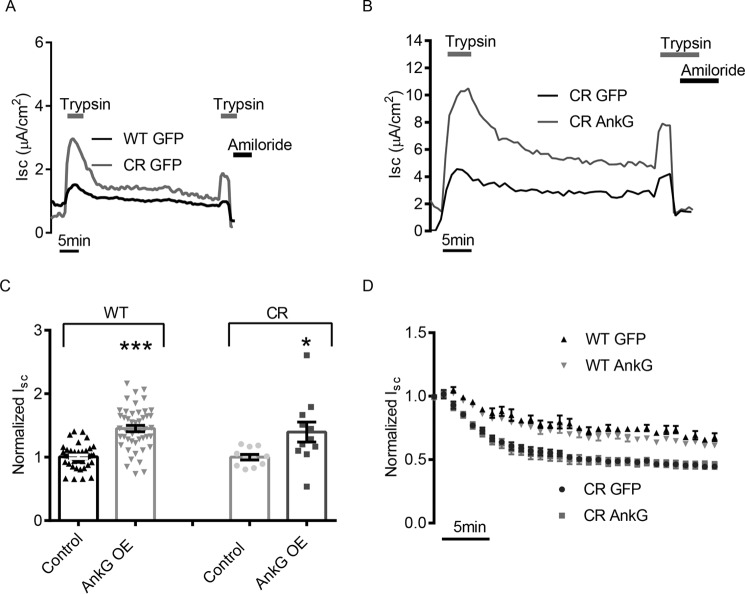FIGURE 4.
AnkG overexpression does not impact ENaC internalization rates. A, representative Isc traces of WT and CR ENaC expressed in FRT cells following trypsin activation, washout, secondary trypsin activation, and amiloride block. CR ENaC is electrically silent until trypsin cleavage activates the pool of ENaC at the surface. Following removal of trypsin, the decay of current in the CR ENaC transfected FRTs gives the rate of internalization without contribution from channels being inserted into the membrane from biosynthetic pathway. B, representative Isc trace of CR ENaC with or without AnkG OE. C, summary of WT ENaC and CR ENaC Isc phenotypes. FRT cells heterologously expressing ENaC and a control plasmid, or AnkG. AnkG OE significantly increased WT ENaC current (1.45 ± 0.05 versus 1.00 ± 0.02, n = 45, p < 0.001) and also significantly increased the trypsin activated CR ENaC current (1.40 ± 0.16 versus 1.00 ± 0.04, n = 11, p < 0.05). D, average current decay curves of WT and CR ENaC with control or AnkG OE. WT ENaC decay rates are shown to demonstrate their slower rate caused by the contribution of channel insertion from the recycling and biosynthetic pathways. As expected, CR ENaC current decay is faster than WT ENaC; however, there is no significant change in the rate of removal with overexpression of AnkG in either CR or WT ENaC experiments.

